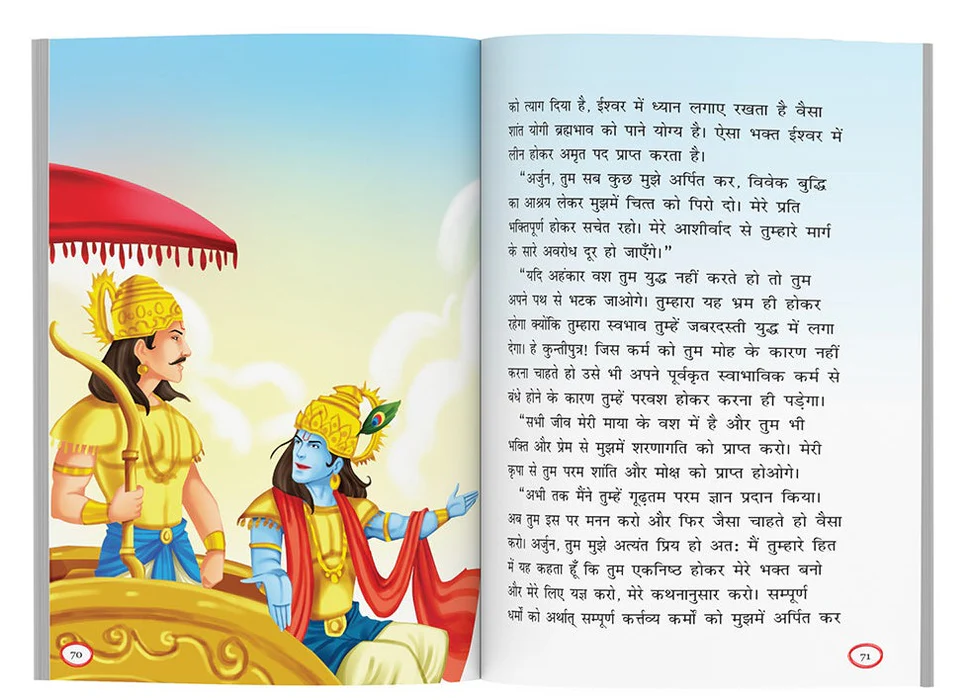The Bhagavad Gita, an integral part of the Indian epic Mahabharata, holds profound philosophical insights and spiritual wisdom. Narrated as a conversation between Lord Krishna and the warrior Arjuna on the battlefield of Kurukshetra, the Gita addresses complex dilemmas about duty, morality, and the nature of life. Through its various teachings, stories, and verses, it provides timeless guidance that transcends generations, inspiring millions around the world.
The Gita begins with Arjuna’s moral crisis as he prepares for battle against his own relatives and teachers. Conflicted about the righteousness of killing, he turns to Krishna for guidance. Krishna’s counsel covers a range of themes: the importance of performing one’s duty without attachment to results (Karma Yoga), the need for devotion (Bhakti Yoga), and the pursuit of knowledge (Jnana Yoga).
Each chapter captivates with profound verses that resonate with the human experience. For instance, Chapter 2 establishes the foundation of the Gita, discussing the eternal nature of the soul and the significance of fulfilling one’s responsibilities. It encourages readers to rise above emotions and make decisions grounded in wisdom.
Bhagavad Gita stories unfold various parables, illustrating its teachings through relatable narratives. The story of Arjuna’s transformation from confusion to clarity epitomizes the journey every individual must undertake. Similarly, the allegories within the Gita, such as the chariot representing the human body and Krishna symbolizing the divine guidance, create a rich tapestry of understanding that reflects both the spiritual and practical aspects of life.
Furthermore, the motivational shlokas from the Gita have become guiding principles for countless people. Phrases like “Karmanye vadhikaraste ma phaleshu kadachana” emphasize the importance of action and selfless service, making the Gita relevant in modern times. Moreover, its teachings on emotional stability and resilience offer solace in today’s turbulent world.
In recent years, the Bhagavad Gita has gained traction as a motivational and self-help resource. Many have explored its chapters to find inspiration in adversity, equipping individuals with tools to confront challenges with courage and conviction. The richness of Gita’s wisdom extends beyond religious confines, appealing to seekers of truth across the globe.
Conclusion
In conclusion, the Bhagavad Gita is not merely a religious scripture; it is a comprehensive guide to living a meaningful life. Its stories, teachings, and motivational messages encourage individuals to seek knowledge, practice devotion, and execute their duties with integrity. By studying the Gita, one gains insights into overcoming personal challenges and achieving spiritual growth. Whether read for spiritual enlightenment or personal motivation, the Gita remains a beacon of wisdom, guiding humanity towards a peaceful and fulfilling existence.
